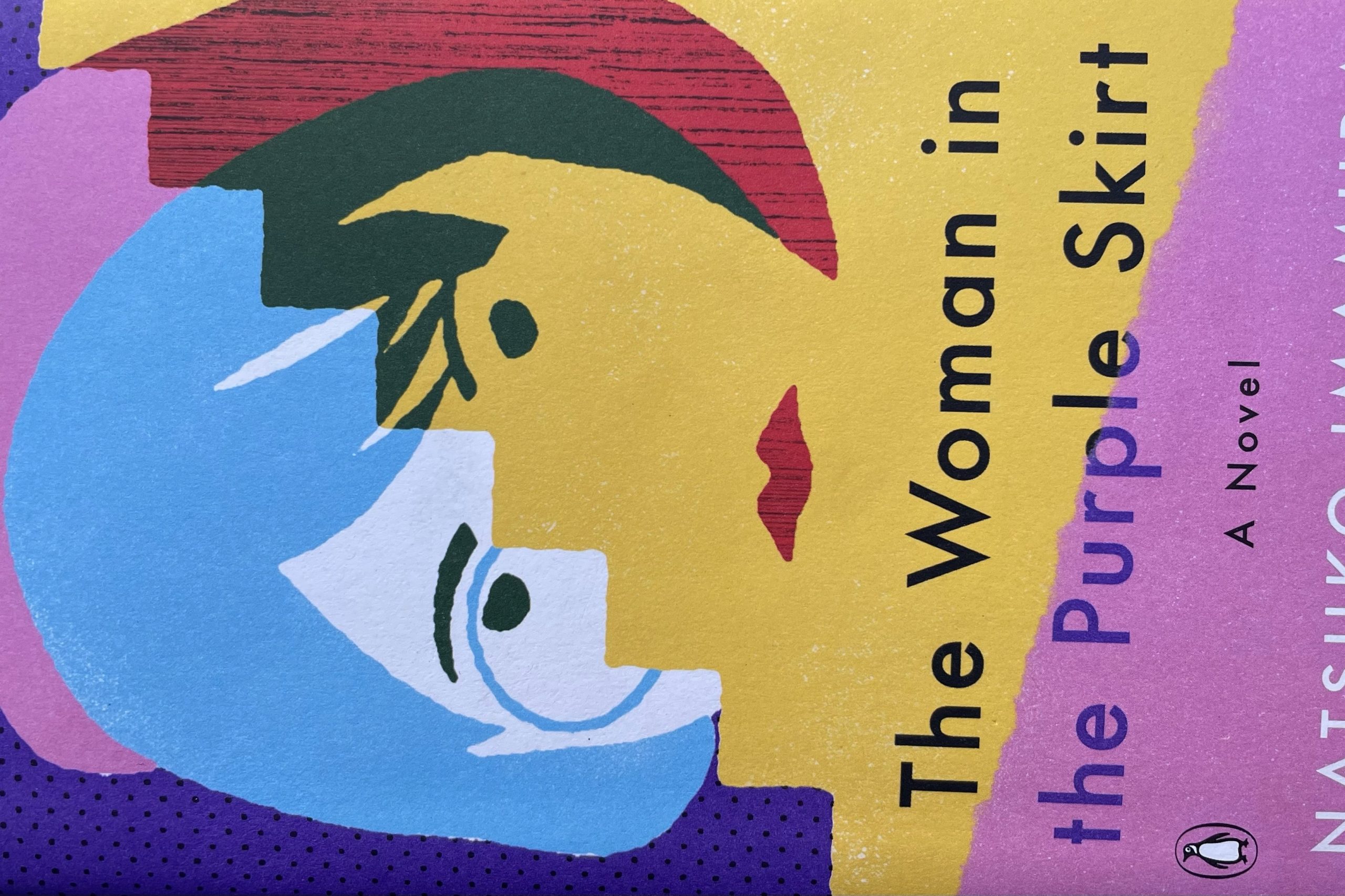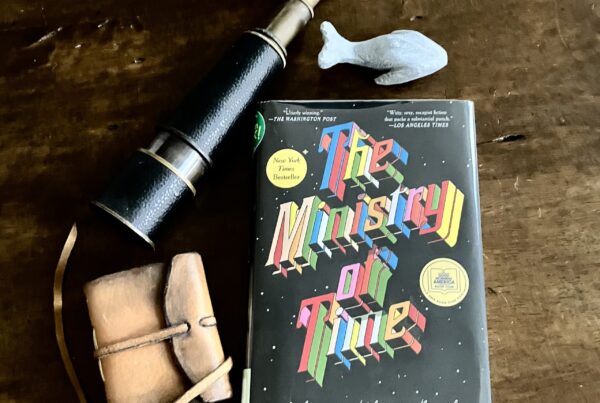What is it about watching someone obsessively watch another person? And why do we never remember that in fixing our attention on the person with the fixed gaze, we, too, are engaging in a kind of obsession?
I happily fell into a recent iteration of this familiar yet pleasing plot when I picked up Natsuko Imamura’s slender novel, The Woman in the Purple Skirt, translated from Japanese by Lucy North. Narrated by a woman who tells us nothing of herself except that she wears a yellow cardigan and works as a housekeeper at a hotel, this story reminded me instantly of the unforgettable movie, Parasite, and the equally unforgettable American short story by Charlotte Perkins Gilman, “The Yellow Wallpaper.”
In all three the point of view is unreliable – the storyteller hides as much as is revealed. The yellow-cardigan wearing woman spends her days and nights tracking the mundane details of the life being lived by the woman in the purple skirt, a woman she doesn’t know but can’t stop thinking about. The woman in the yellow cardigan tells us that the woman in the purple skirt, who sits on the same park bench every day to eat a cream bun, reminds her of different girls she once went to school with but wasn’t friendly with, and we get the sense that this narrator is a deeply lonely, possibly unhinged individual.
The plot develops when the voyeur succeeds in getting her subject to apply for a job at the hotel where she works. The woman in the purple skirt seems to skate above all of life’s challenges while the woman in the yellow cardigan gets caught for her petty acts. The woman in the purple skirt even begins an affair with a high-ranking man in the housekeeping company – or so we are led to believe by our bitter narrator who follows them everywhere, eating alongside them, watching movies in the theater behind them while forgetting to pay her bills.
It is precisely at this moment in my own obsessive reading that I remembered a scene in “The Yellow Wallpaper” in which the narrator, being treated for an undisclosed mental disorder probably associated with postpartum depression, looks out the window and sees women crouching and sneaking along every path in her view. As Gilman’s story concludes, we come to understand that the narrator herself is such a crouching, sneaking woman who has been driven to madness by a society that infantilizes and pathologizes her. The woman in the purple skirt and the woman in the yellow cardigan are more similar than they are different, and in fact are possibly one and the same.
Whatever the relationship between the two women in Imamura’s powerful novel, I was left with a sudden realization about reading that will stay with me: in some ways, reading is itself an act of obsessive watching, and interpretation is an act of obsessive tracking for themes, changes of action, and character development. The Woman in the Purple Skirt is a satisfying and memorable addition to the canon of global feminist literature.




